Hello! It’s getting warmer here in Japan, and the rainy season is coming soon. Beaches will also be officially open this month in many regions of Japan. Many of the beaches are connected to harbors, which were historically used for transporting goods. This month’s topic is tarukaisen cargo vessels – boats specially designed to transport sake casks. One of our previous posts featured the sailing routes used for transporting sake by sea. In this post, we’d like to introduce the topic of sailing conditions.
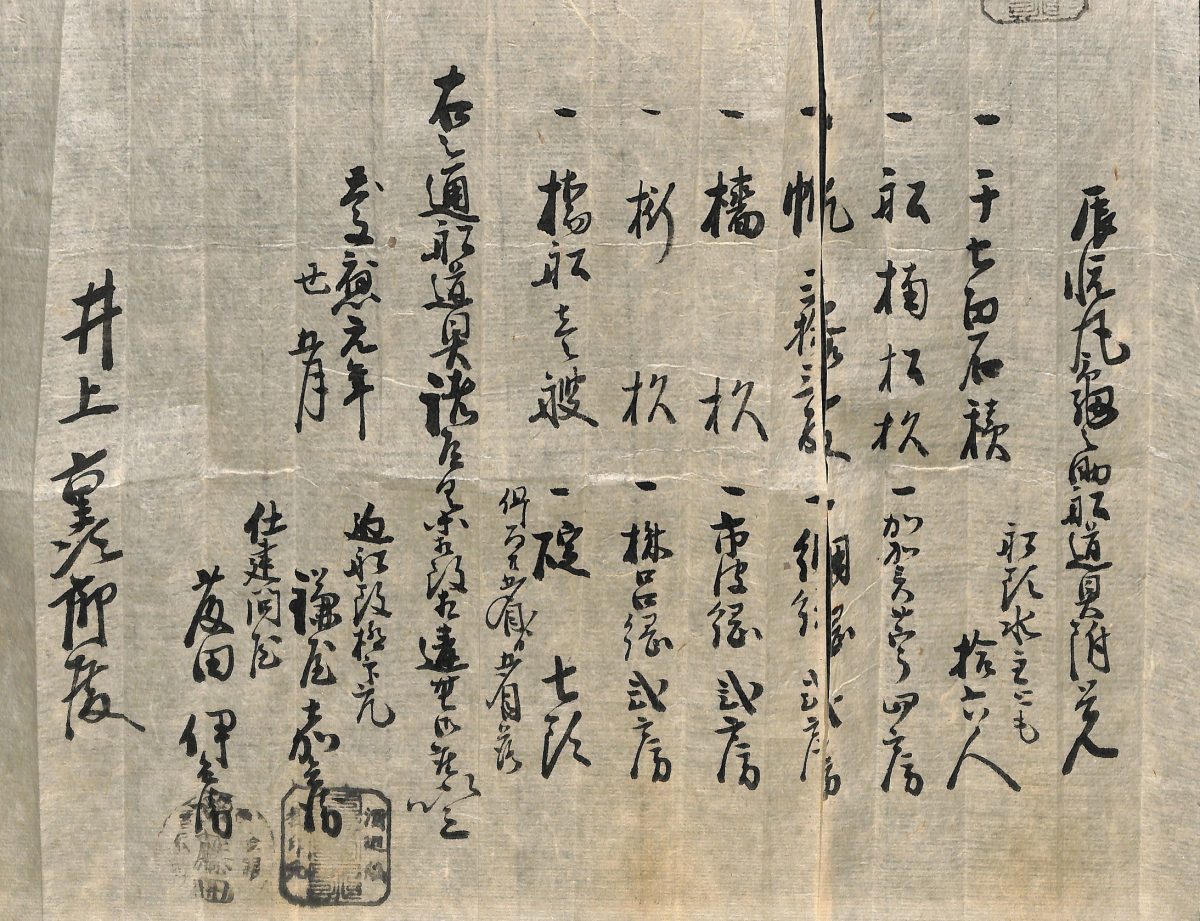
First, let’s take a look at a historical document titled “Record of Sailing Equipment for Tatsuetsumaru Kamenosuke Cargo Vessel” which describes the tarukaisen cargo vessel owned by Tatsuya Kichizaemon, a sake brewer in Nishinomiya, toward the end of the Edo period (the 19th century). The Tatsuetsumaru vessel was reportedly over 50 meters long with a cargo capacity of 1,700 koku of sake (1 koku=180 liters), or approximately 3,000 casks of sake, and was one of the largest sake cask carriers of its time. The vessel was made of cedar wood and was loaded with various sailing equipment. For example, seven anchors with incremental weight differences of 20kg, the largest one weighing 470kg, were stored on board and used as needed.
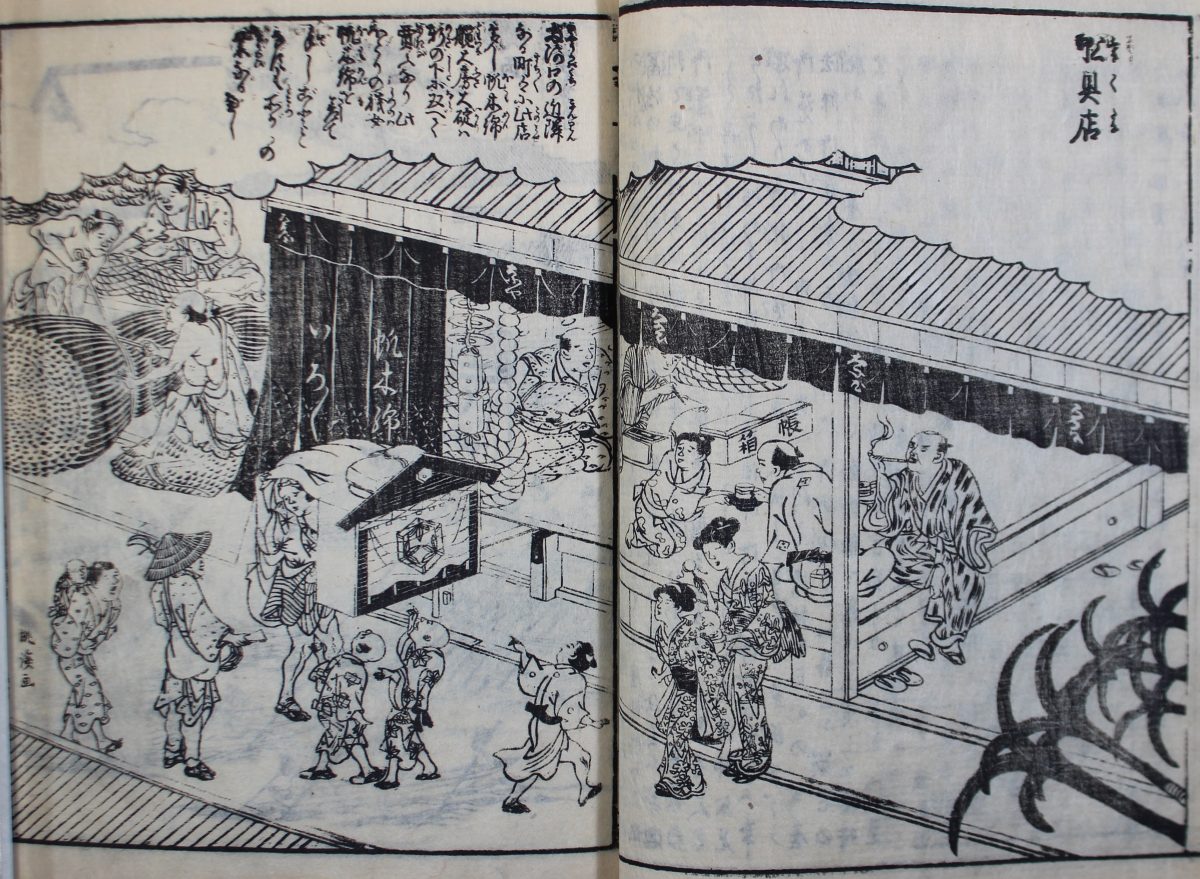
Anchors of Various Sizes are Depicted at the Bottom-right Corner.
Next, let’s learn about the sailing crew on the Tatsuetsumaru vessel who used the equipment to travel back and forth between Edo and Kamigata (Kyoto and its vicinity where the Emperor resided). The document shows that a crew was formed of 16 members, a common size for the crew of a cargo vessel. The “Tatsuetsumaru Purchase Ledger”, which describes the supplies used by the crew during their voyages, details that the ship was loaded with items such as rice, miso, pickles, soy sauce, salt, vinegar, sake, tea, rice bran, oil, firewood, razors, persimmon tannin, candles, rope, and woven mats. The voyage to Edo usually took one to two weeks, and food consumed by the crew during the voyage was loaded separately from the sake casks and the other products being transported. Some money was additionally provided to the crew for purchasing groceries and other necessary items.
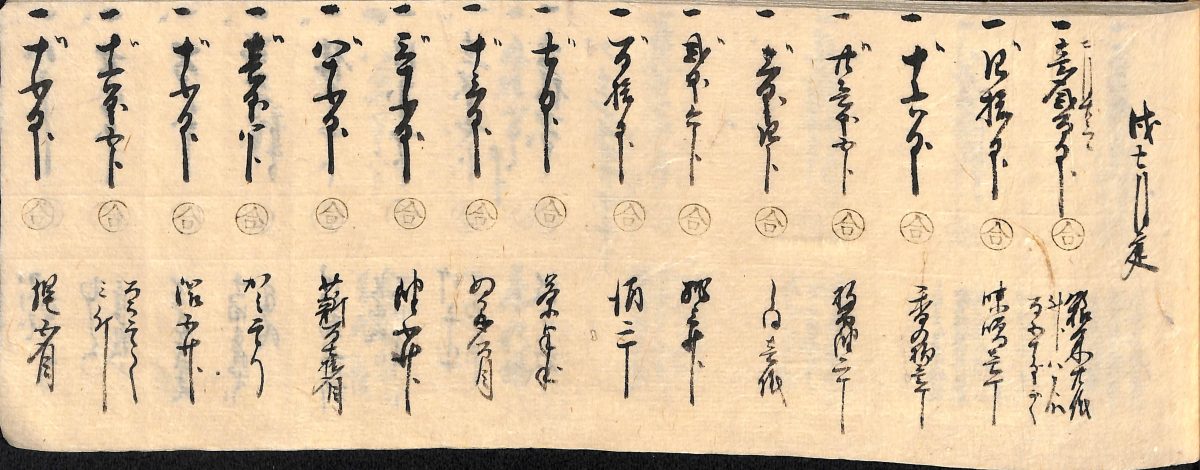
Such as Items (Including Sake for the Crew), Prices and Amount.
Lastly, let’s consider the topic of sailing conditions by taking a look at the regulations imposed on the crews. The document “Declaration on the Prohibition” (1865) contains 12 articles of prohibition pertaining to voyages, along with some other regulations. The third article, for example, forbids morning sake drinking parties at Toba Matoya (present-day Toba and Shima Cities, Mie Prefecture) and at the seashore in Shimoda, Izu Province (present-day Shimoda City, Shizuoka Prefecture). A total of one-fourth of the articles, (the third, fourth, fifth, and tenth articles), prohibit the crew from drinking sake. The aforementioned “Tatsunetsumaru Purchase Ledger” shows that sake for the crew was supplied for them to enjoy during the voyage. However, the problem was that the crew purchased additional sake and had drinking parties at the ports while waiting for favorable sailing winds. These rules were thought to have been established in order to avoid the crew getting drunk. A drunken crew could result in the vessel not being able to depart with the next favorable winds, which would have caused delay in their arrival to Edo, or could have caused accidents.
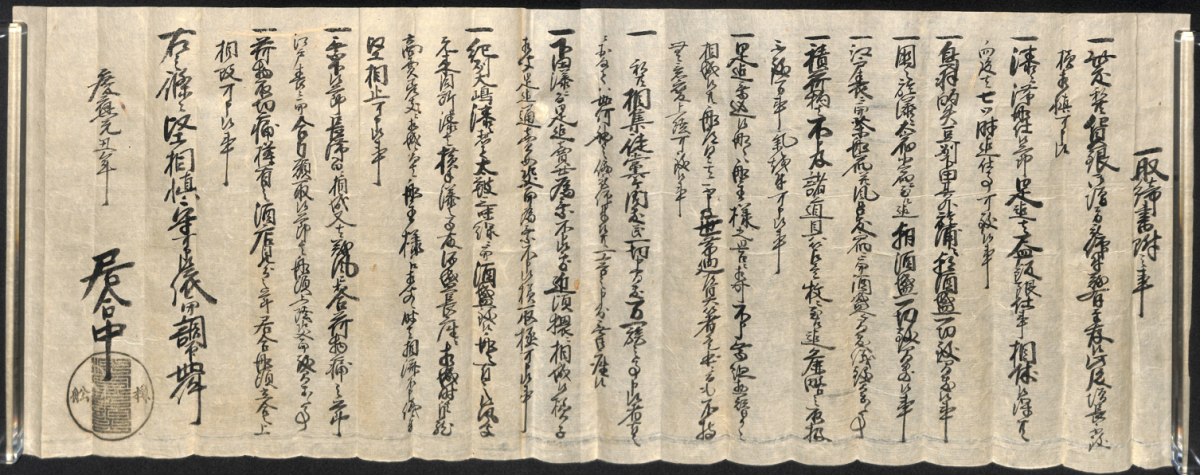
We hope you were able to discover some new insight regarding the conditions of the tarukaisen cargo voyages as we delved into the historical documents in this article. We look forward to seeing you again next time!


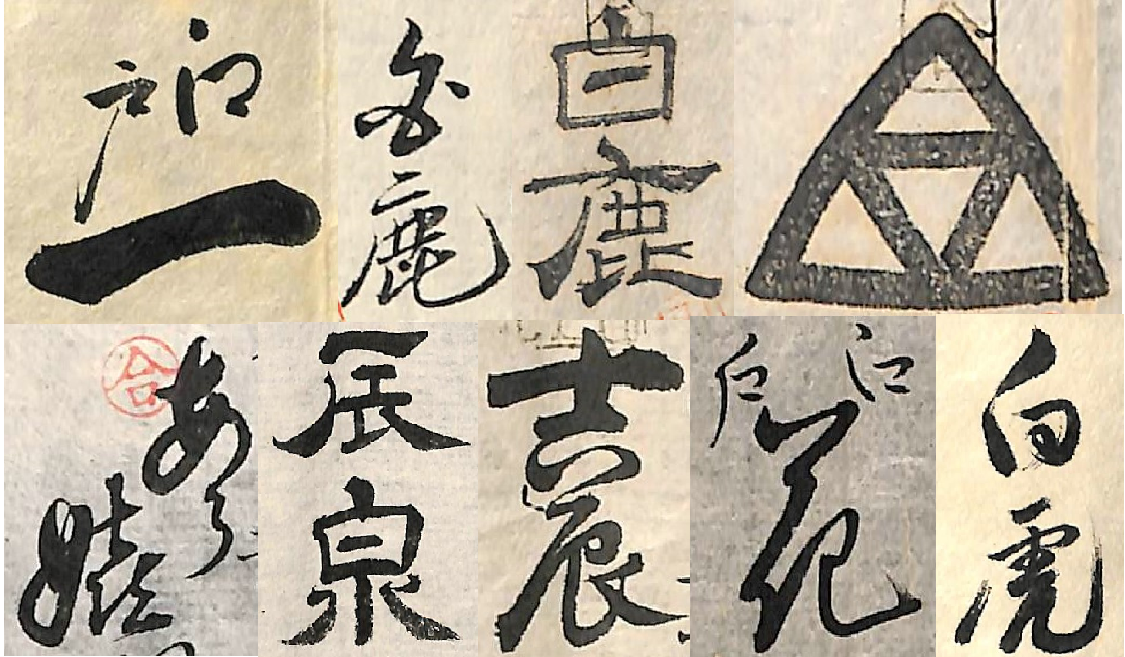

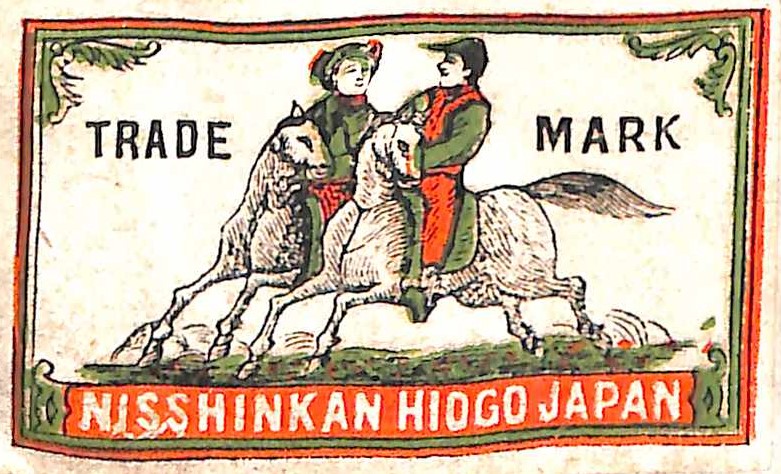

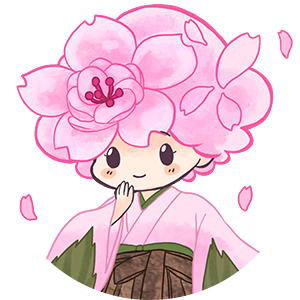
Sake logos are so cool!!